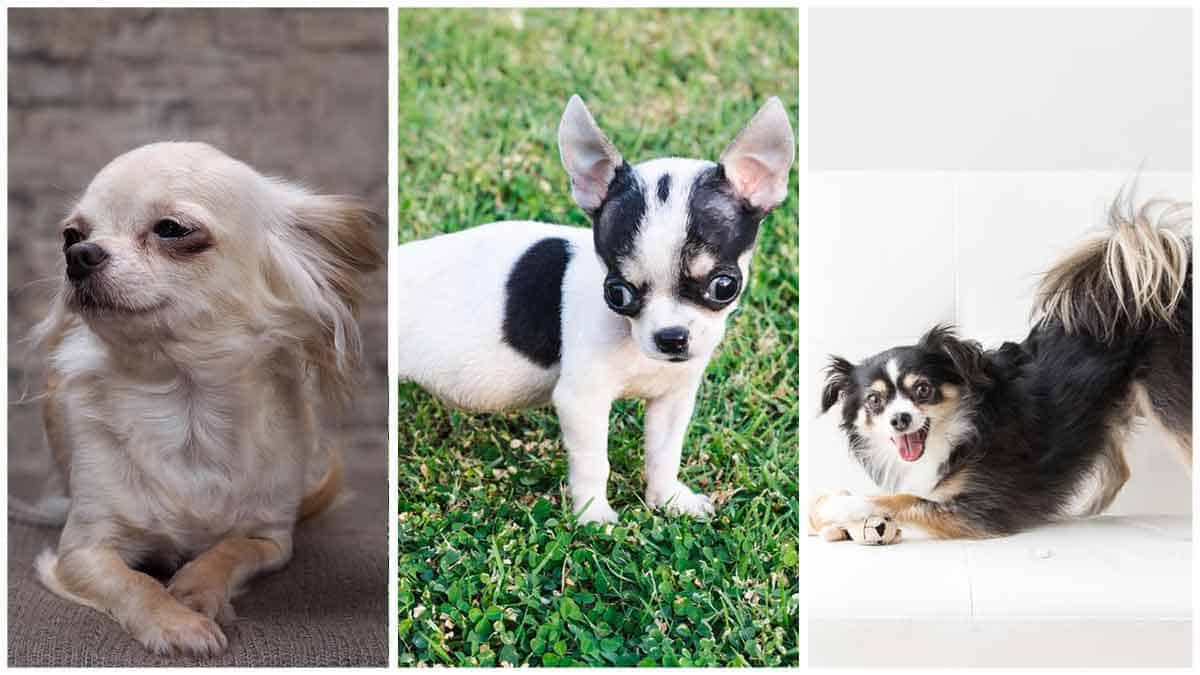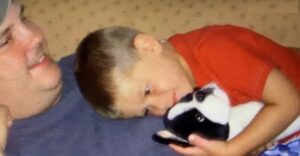Many behavior problems have a component of fear, anxiety, or excessive arousal so retraining cannot begin until a calm, relaxed state can be achieved on cue.
Training should focus on both the behavioral response (sit, down, walk, stay on your mat) as well as the emotional state (calm, relaxed). In fact, until you can get your pet to focus and relax on cue in the absence of stimuli that evoke anxiety or arousal, it is not practical to attempt to get your pet to relax in the presence of these stimuli.
“A good place to start is with a new set of cues that help both the pet and you to understand what behavior is desired.”
Once the dog has learned to settle on cue, it should be possible to begin exposure to gradually more intense stimuli (see Desensitization and Counter-Conditioning).
The settle command could be used to achieve a focused response when the dog is overly excited or anxious such as when greeting family members, strangers, or other animals. It can also be used when dogs become anxious as the owners prepare to depart or become overly excited when the company arrives or when preparing for a walk.
How does settle training work?
Training your dog to respond to a verbal cue or command, or when it sees a visual cue, might be described as cue-response-reward or command-response-reward training.
Generally, the sequence is: to find a means of ensuring that the pet will immediately and consistently exhibit the desired behavior; to reinforce the behavior; and then to add a cue prior to the behavior. Some of the behaviors that can be useful to place on command, especially for pets with behavior problems are sit, down, heel, and go to your mat.
A good place to start is with a new set of cues that help both the pet and you understand what behavior is desired. Rather than “sit,” you might use a “watch,” “steady,” “focus,” or “chill” command. Similarly, instead of “down,” a “relax,” “settle,” or “SOFT” command might be considered. “Follow” or “heel” should be used for a calm, loose leash walk, and “go to your mat” should mean go settle down in your bed.
How do I get started?
Before you start training your dog, you must make sure your dog is sufficiently exercised and has an enriched daily routine (see Enrichment, Predictability, and Scheduling). Your dog must have a daily routine that includes walk/play times, feeding, time playing alone, and sleeping times.
Furthermore, your dog should know what behaviors earn him a reward (see Learn to Earn – Predictable Rewards). Training a dog to settle and focus should begin in an environment where your dog is calm and there are minimal or no distractions.
Although the sequence for training is to (a) give the command, (b) get the desired response (using one of the techniques described below), and (c) give clear and immediate reinforcement, training cannot begin until you have a means by which the target behavior can be reliably and consistently achieved.
There are a variety of different methods by which the initial response can be achieved. In most cases, food, a toy, or a visual target (which has been associated with favored food treats) can be used to lure the pet into the desired response.
Alternately, a physical device such as a leash and head halter can be used to physically prompt the dog to display the target behavior, along with immediate relaxation of tension as soon as the desired response is exhibited.
Another option is to reinforce the desired behavior when it is exhibited spontaneously and then to add a cue word just prior to the response (this technique is often used when training a pet to eliminate on cue). A SOFT relaxation exercise can also be used to achieve a relaxed response. Food, affection, a favored toy, or a clicker can all serve as rewards if they are consistently given immediately following the behavior.
These rewards should be withheld except for training. Over time, the behavior can be gradually shaped for greater relaxation or longer duration.

How do I achieve a relaxed state?
Once the desired response is achieved, the goal of settle and relax training is to shape gradually more settled and relaxed responses. This can be accomplished by saving favored rewards exclusively for training and immediately reinforcing the pet for the desired response. With each subsequent training session, responses of gradually longer duration and gradually increasing relaxation should be reinforced.
You will need to focus on your dog’s facial expressions, body postures, and breathing in order to determine the pet’s level of relaxation (e.g., sitting with one leg tucked under the body, relaxed facial muscles, breathing regularly and slowly), before giving rewards and proceeding to gradually more successful outcomes.
Clicker training can be particularly effective for marking and reinforcing gradually more desirable increments of behavior. A leash and head halter can be used to ensure success before release and reward. In order to achieve and maintain a calm response, the person doing the training must remain calm, relaxed, and soft-spoken, and the environment must be free of distractions.
Remember, while you might be teaching the pet to sit/stay or down/stay, what you really want to emphasize is a relaxed emotional state.
How do I teach my dog “look,” “watch me,” or “focus”?
- Show your dog a favored toy or treat and then hide it behind your back. Have your back against the wall or be in a corner so the dog can’t get behind you. An alternative method is to hide the treat in your closed hand in front of your chest in a line between your dog’s eyes and your eyes. On the first attempt, it would be acceptable to show the puppy the toy or treat.
- Say “look” or “focus” and as soon as your dog stops its attempt to get the treat and makes eye contact, use your reward or clicker and give the treat. Repeat to improve consistency and immediacy. It may be necessary to guide the dog by using your hand and bringing it up to your eyes. As the dog follows your hand, give the keyword and reward eye contact.
- For some owners it might be more practical and desirable to reward the behavior only when the dog is in the sitting position.
- Gradually increase the amount of time you require eye contact to last and then start adding distractions in the background, like people playing, a fridge door opening, etc. Your dog only gets rewarded after maintaining (e.g., not breaking) eye contact with you. Once the dog is consistent in giving the correct response even when there are distractions, go to other places (outside) and add mild distractions, such as another dog nearby or children playing. After each successful session gradually increase the distractions and work in busier environments.
- The goal is for your dog to maintain eye contact on cue with the key phrase for several minutes, regardless of the amount of distraction and background activity.
- Progress gradually to longer duration and increased relaxation before rewards are given (see below).
How do I teach my dog to “settle” in a down position?
- Another exercise would be to train the dog to lie down in a relaxed position, on its belly with both hind legs on the same side. In some cases, it may be useful to have the pet put their head on the ground as well. This could be accomplished using food lure training, leash, and head halter, or physical exercise.
- Gradually progress to longer down stays in a variety of environments, and then gradually increase the background noise and distractions. Progress gradually to longer duration and increased relaxation before rewards are given (see below).
- It may also be useful to teach “settle” in a sit position for training while on walks.

How do I teach a settle location (e.g., “go to your bed”)?
“The head halter is an extremely effective tool for quickly and reliably achieving the initial behavior and for progressing rapidly.”
- Training the dog to settle indoors can sometimes be more easily accomplished by using a settle-down area. The dog can be taught to “go to your mat or bed” or “go to your kennel” where it learns to stay calm for favored rewards.
- Food lure training or target training can be used to achieve the initial response.
- Progress gradually to longer duration and increased relaxation before rewards are given (see below).
- At first, you may need to leave a leash attached so that your dog can be physically prompted (taken) to the bed or mat, to ensure success and to demonstrate to the pet what behavior will result in a reward. Again, giving rewards at other times will delay learning (learn to earn).
- If the dog is also taught to sleep in this area and favored toys are kept in the area (and if a favored treat or social interaction is given when the pet voluntarily uses the area), it may soon learn to go to this area to relax on its own.
What other devices or techniques can be used to help me get my dog to relax on cue?
“The person doing the training must remain calm.”
The head halter is an extremely effective tool for quickly and reliably achieving the initial behavior and for progressing rapidly to responses of longer duration and greater levels of relaxation. A pull on the leash and head halter, with or without the use of a cupped hand underneath the pet’s chin can pull the dog into a sit with eye contact for release and positive reinforcement.
While releasing the head halter (negative reinforcement) immediately reinforces the behavior, the treat (positive reinforcement) will follow later (with gradually increasing the delay) and is used for shaping the behavior. With further training, eye contact can be maintained for progressively longer intervals before reinforcing.
Similarly, the leash and head halter can be used to achieve a settled-down response, with hind legs over to one side. A settled down of increasingly longer duration and greater relaxation can then be shaped with rewards. With the leash and head halter, the down position can be maintained until the desired outcome is achieved either by keeping a foot on the leash or by pulling gently upward as the pet begins to rise.
The use of the head halter does not preclude the concurrent use of lure reward and clicker training techniques to ensure a desirable outcome. Before using a head halter make sure your dog is well trained to accept and work with it.
Physical Exercises
Techniques that use physical contact can help to increase enjoyment and decrease any fear associated with handling and restraint. In addition, they provide a means for achieving a relaxed state, which might then be used if the dog begins to get excited or aroused.
While physical contact and attention may provide sufficient reinforcement for some dogs, food treats can also be paired with handling to mark and reward the desirable response.
While these are specific techniques, any physical handling that is associated with a positive outcome can be a valuable training exercise. In addition, by withholding affection when the pet solicits it, it increases its motivational value and usefulness as a reward. See our individual handouts that detail these exercises.
Physical exercises are intended to be used only with friendly, non-aggressive dogs. If you think your dog might become aggressive, do not begin without first discussing this with your behavior consultant. If your dog growls or attempts to bite, become fearful, or struggles excessively during these exercises, immediately discontinue them and seek the advice of a behaviorist or trainer.

Source: www.vcahospitals.com




